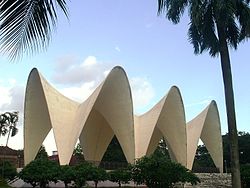| Prime Minister of Bengal | |
|---|---|
 Badge of Bengal | |
 Flag of British Bengal | |
| Style | The Honorable |
| Appointer | Governor of Bengal |
| Formation | 1 April 1937 |
| First holder | A. K. Fazlul Huq |
| Final holder | H. S. Suhrawardy |
| Abolished | 14 August 1947 |
| Succession | Chief Minister of West Bengal, India Chief Minister of East Bengal, Pakistan |
The prime minister of Bengal was the head of government of Bengal Province and the Leader of the House in the Bengal Legislative Assembly in British India. The position was dissolved upon the Partition of Bengal during the partition of India in 1947.






